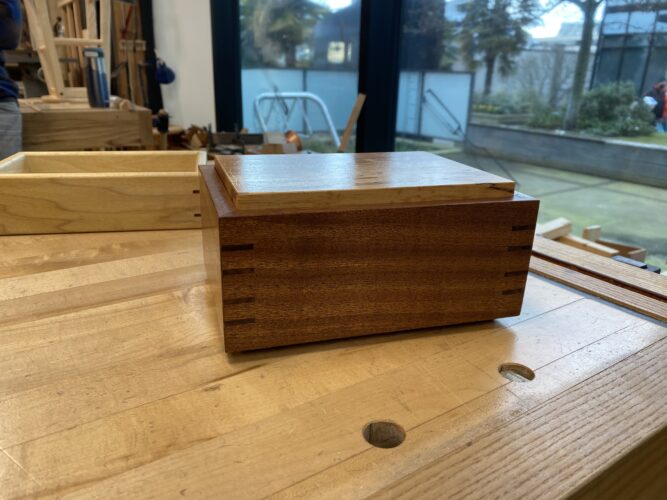I am pleased to announce that as of tomorrow morning May 7, 2021, we are again open for woodworking. Thank you for your patience and I hope this is the last of this kind of thing.
All of you that were put on hold by the recent closure would have received a message from Colleen Huskisson at North Vancouver Recreation Commission telling you that we are resuming sessions as normal. She has been a huge help in navigating the rather complicated matter of reorganizing our programming.
May I request, despite our COVID fatigue ( I fully understand if you feel this way), that we remain very diligent in sanitizing in the studio. Your diligence in sanitizing surfaces and tools in the past is also very much appreciated.
Don’t forget that those of you who have had at least three consecutive sessions of your level 1 can book any drop-in if you feel you would like to speed up the construction of your project or to simply explore the process at a more leisurely pace.
NEW COURSE ADDED TO THE SPRING PROGRAM
When we released the Spring Program we never included a Level1/2 Joinery Fundamentals Intensive. Typically we include one of these week long full time courses. Now we do and its is programmed in for June 28 to July 2, 2021. This course runs over 5 days from 9am to 5pm and is a great micro sabbatical in woodworking covering the equivalent of Level 1 and 2. Material is included and typically people make a small sophisticated piece incorporating some of the many techniques explored in the course. The pic above was finished in an Intensive. (well done Liz!!). The course is open NOW for registration and as always there are only 5 spots until the next one in mid August 2021.
Finishing – a short discussion
Finishing NOT STAINING **###@@@!!!!!!!!!. Yes some of you will know my sentiments. Finishing does NOT have to involve colour. Sometimes it MUST – but that’s sometimes!
We are often asked about what finish we ought to apply to either enhance or protect a project. All or most finishes will add protection, some more than others. More protection sometimes means more finish ON the wood and not so much IN the wood and this can change the tactile FEEL of the wood. There are many types of finish – some add color, some have resin content that build a finish ON the wood, some are shiny, some matt etc. Finishing is NOT a quick study – and neither need it be.
The simplest of all would be an oil finish such as Tung Oil or Boiled Linseed Oil or an Oil and Wax (a Linseed Oil and Beeswax) finish, both of which are rather easy to apply and give an immediate WOW. Typically oil will enhance colour and contrast. Remember however to never allow liquid oil to dry on the surface of the wood. It MUST dry IN the surface as not to cause the surface to become gummy to the touch. This requires that the oil be allowed to penetrate the surface and stay there for about 10- 20 minutes and thereafter be well rubbed out with a small clean cotton rag. Rubbing is hard work but it pays off. The oil then cures or dries IN the surface. When applying the oil DONT use a huge cloth rag since its going to take a lot of oil to simply saturate the rag.
“Why do I see these scratch lines and swirls in the surface” – after applying an oil or stain. Any scratches in the surface reveal the ends of the wood fibres. Next time you are in the studio ask an instructor to dab some oil on the end grain of any wood and then dab a little on the face grain of the same piece. The end grain will always appear a lot darker. Hence surface preparation should not be discounted by rushing to finish. Torn surface fibres or scratches will become dark when the oil you apply enters the fibre ends. Equally important is being diligent to remove ALL glue residue. Glue in the surface will resist finish penetration and will show up as a random shape of lighter colour.
That’s a narrow view into the very wide world of finishing wood.

